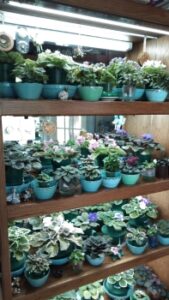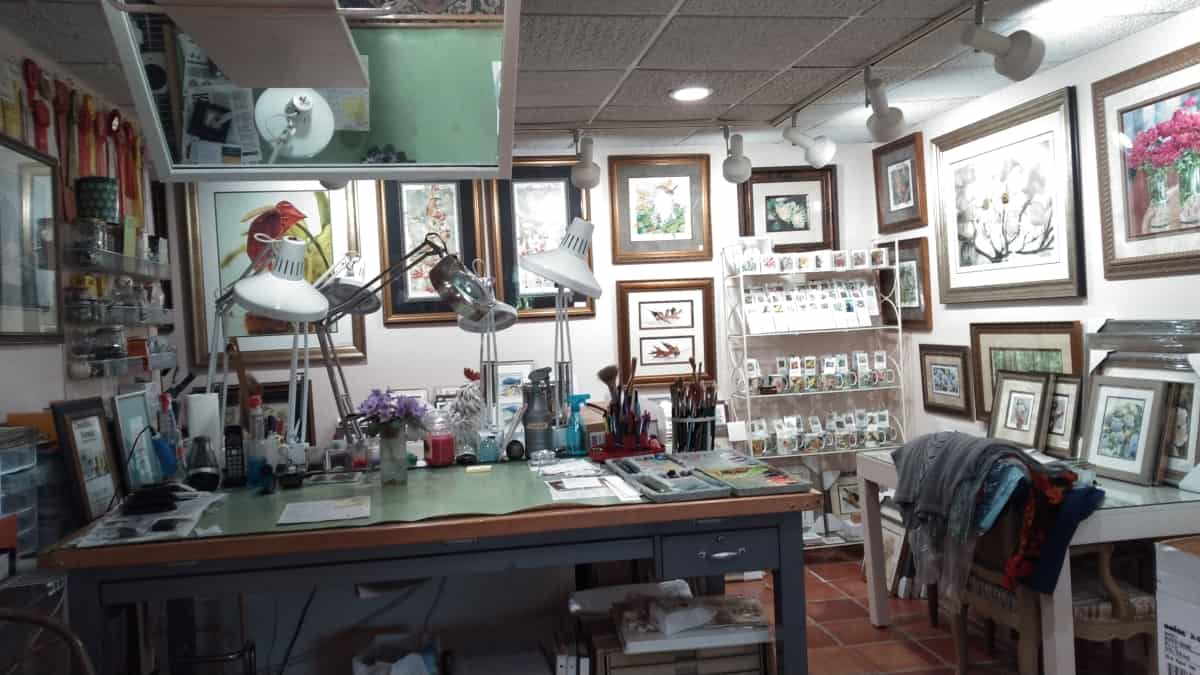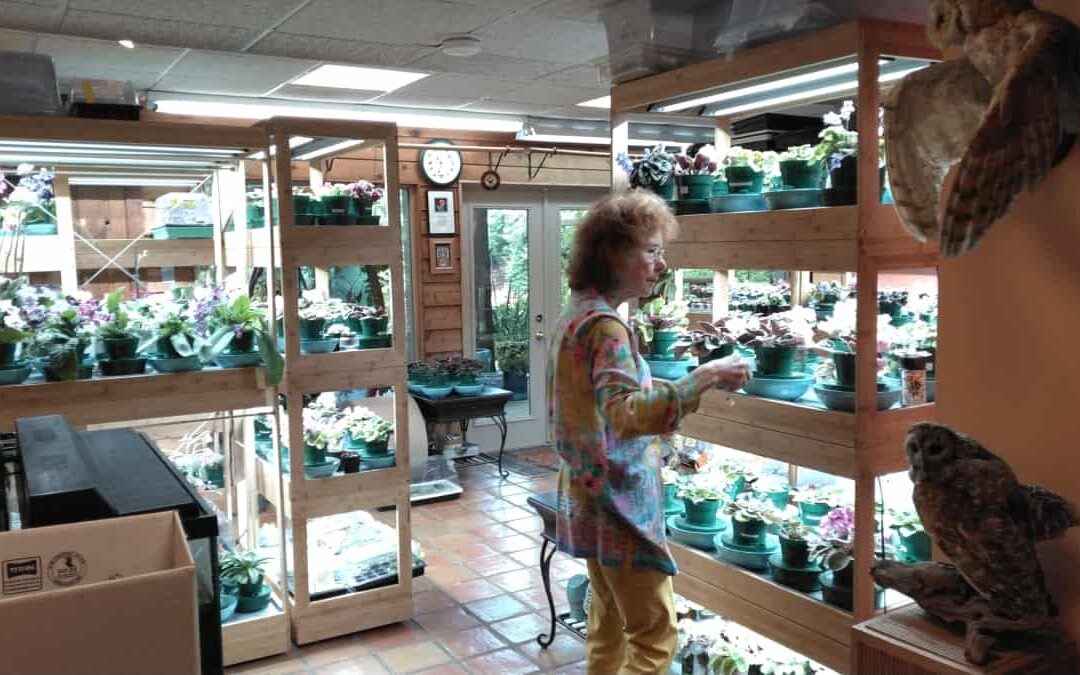Last week I had a fabulous visit with Mary Booth Cabot. Mary is a nationally acclaimed artist known for her botanical paintings and lithographs. When you look out over Mary’s garden, you immediately know this is an artist’s garden–it is dazzling. Mary said her love of gardening started when she began gardening with her grandmother at the age of 4. Mary paints botanicals and birds, cultivates her garden, and propagates plants, especially African Violets. If you’ve visited Mary, you know she generously shares her wealth of knowledge along with her plants.

As Mary says on her site Dancing in the Garden, she has been growing African Violets for 44 years and thoroughly enjoying them. What she doesn’t say on her site is that African Violets have taken over her house. Here are a few pictures from Mary’s house. She isn’t kidding when she says the African Violets are her babies.
I’ve always loved African Violets, but I’ve rarely had success with them. Here are some tips on growing African Violets from Mary.
Mary: Quickie African Violet Facts
- African Violets need 10-12 hours of light to keep blooming continuously
- African violets grow well in sunlight (but not direct) and fluorescent or LED lighting
- Violets do not like “wet feet” so do not let them stand in water more than 30 minutes
- Semi-miniature & miniature African Violets need to be re-potted every 6 months
- Larger African Violets & standard African Violets need to be re-potted every 8-12 months
- African Violets like to be crammed-full into their pots so when you re-pot only go as large as a 4″ pot
Watering
Over-watering is the most common reason for failure with violets. They die within a short time with the leaves turning jelly like and drooping over  the pot rim row by row until even the central core of the plant rots away. If violets just die on you the problem is probably over-watering. If they live, but just won’t bloom the light is probably too dim for too much of the day. Not watering enough or on an erratic schedule rather than when the plants need it will cause violets to grow slowly and irregularly, but it usually won’t kill them.
the pot rim row by row until even the central core of the plant rots away. If violets just die on you the problem is probably over-watering. If they live, but just won’t bloom the light is probably too dim for too much of the day. Not watering enough or on an erratic schedule rather than when the plants need it will cause violets to grow slowly and irregularly, but it usually won’t kill them.
Wick watering is a growing method that provides plants with proper water, fertilizer, and humidity. It is by no means fool-proof, but is a great improvement over traditional top or bottom watering. Start slowly and be sure that you are doing it properly. The wrong soil, too large a pot, or too much wick cord can kill a violet…
Suzy: If these pointers pique your interest, Mary has written an extensive tutorial on African Violets including lighting, watering, setting up a wick watering system, fertilizing, re-potting, and more on her site. You can access the tutorial here: Indepth Tips For Success With African Violets.
Mary’s art and violets can be browsed (and purchased) on her site DancingInTheGarden.com. If you dance on over there I don’t think you’ll regret it.


